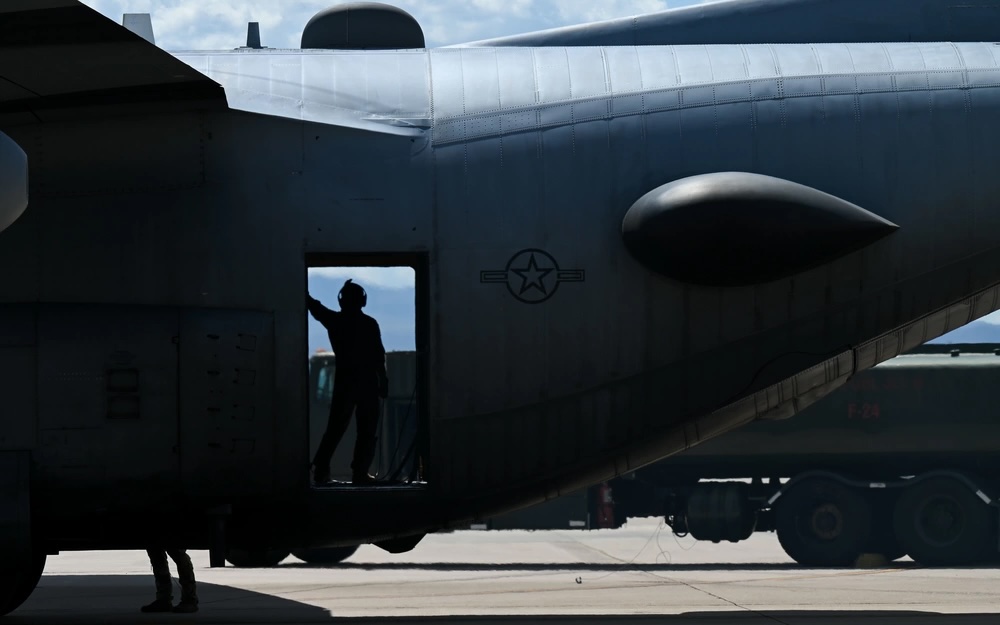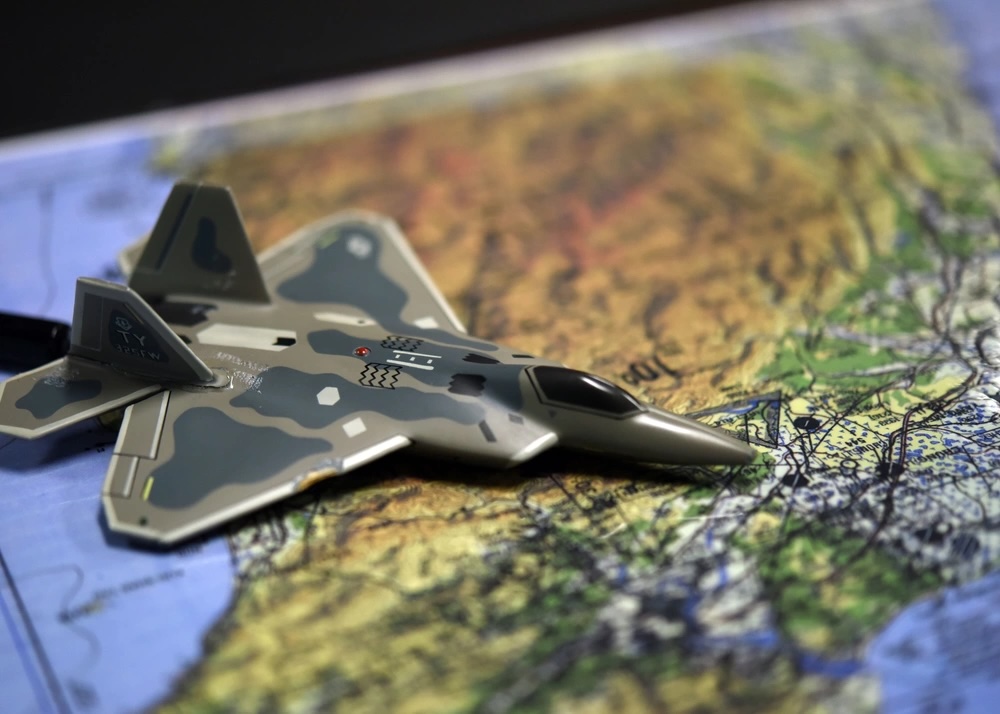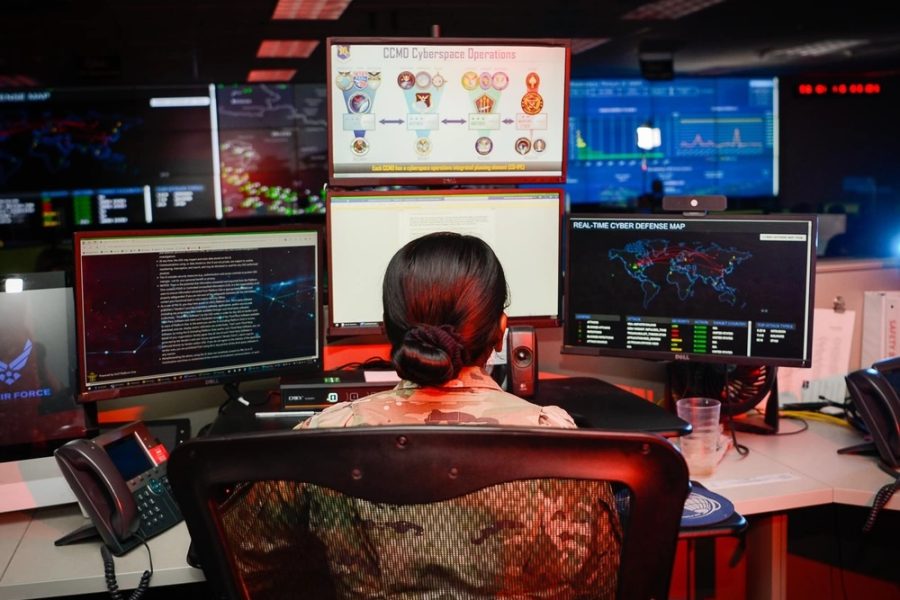The Air Force may be inviting catastrophe by neglecting information warfare, an emerging domain that service officials say is fundamental to air operations, according to a new report published July 30 by the RAND Corporation, a federally-funded think tank.
Despite talking a big game about information warfare for more than 20 years and forming a numbered air force in 2019 to serve as the information warfare (IW) hub, the Air Force has not published formal, actionable requirements that lay out the exact roles and responsibilities for IW organizations, which frustrates and confuses both IW Airmen and the non-IW groups they work with, RAND found.
IW encompasses several fields, including cyber operations, electromagnetic spectrum operations (EMSO), public affairs, intelligence surveillance and reconnaissance (ISR), and weather. But the Air Force does not provide IW-specific training or clear guidance for Airmen involved, which leaves the field “highly-stovepiped along organizational and disciplinary lines,” contributes to miscommunication, and could even risk fratricide, the RAND report stated.
Meanwhile, the Air Force IW community lacks “a single, senior leader focused exclusively on IW” who also has the authority to advocate for resources, leaving the field on a shoestring budget and unlikely to operationalize in a way that produces decisive results.
Though information warfare is still a vague concept for many Airmen, RAND provided a concrete example of what can happen on the receiving end of it: a U.S. Soldier standing in line for a sports event in Latvia in 2017 being approached by strangers casually mentioning details about the soldier’s personal life and family members.
“Although potentially innocuous in this setting, such campaigns could be used in a conflict scenario to identify compromising personal or operational information that adversaries could leverage to degrade Airmen’s will to fight,” the RAND authors wrote. “These efforts could also be used to locate and intercept U.S. forces. Alternatively, if sophisticated enough, such tactics could be used to sow additional confusion amid the fog of war by breaching U.S. systems that are used to convey orders (formally or informally) and issuing false orders.”
One anonymous Air Force officer with IW experience shared RAND’s concerns.
“Frankly, the decision to group all information-related capabilities under a new ‘information warfare’ umbrella has been a disaster from the beginning,” she told Air & Space Forces Magazine.

What IW Is
Information warfare involves using military capabilities in or through “the information environment” to affect adversary behavior and protect against adversary attempts to do the same. That environment includes a range of career fields, but one common feature is the use of non-kinetic instruments with inherent informational characteristics, which provides “flexible response options” to commanders, RAND wrote, a key tool in the grey zone of great power competition.
But IW’s usefulness also extends into kinetic operations. In 2022, Gen. Mark D. Kelly, then-head of Air Combat Command, said IW “underpins USAF airpower operations by creating and leveraging information advantages … gaining advantage in the [information environment] is a precondition for airpower.”
Indeed, one interviewee told RAND that joint force weapons and platforms “are all digital and operate in the information environment. F-35s won’t get off the ground if we first lose in the [information environment].” Not only F-35s, but other Air Force aircraft could be rendered inoperable by EMSO or cyber attacks, while disinformation campaigns mimicking U.S. command and control systems could falsely order Airmen to stand down.
Clear as Mud
Despite its widely acknowledged importance, IW in the Air Force lacks many of the traits that make an effective fighting force, such as a unifying identity, clear roles and responsibilities, effective training, and adequate resources.
“Most fundamental to a comprehensive USAF approach to IW is a coherent, concrete identity,” RAND wrote. The lack of that identity “is inexorably linked to many of the obstacles impeding IW operationalization,” including unclear expectations of what IW can do, how it fits into the joint force, and what the career trajectories are for IW Airmen.

RAND is not the first to note that lack of unity: in November, Lt. Gen. Kevin B. Kennedy Jr., head of the 16th Air Force, flagged “unity of effort” as a major goal. Specifically, his cyber, public affairs, ISR, and other specialized Airmen are pulled in different directions by conflicting operational commands.
“How do we generate unity of effort without specific unity of command?” he asked. “Yes, they’re all within 16th Air Force, but their operational activities a lot of times … are operationally controlled by somebody else.”
The anonymous Air Force officer with IW experience cited a similar challenge. The Air Force could have aligned IW with the seventh joint function laid out by the Joint Chiefs of Staff. Instead, she said the Air Force went its own way, struggled to define IW and chose to resolve it “by simply tacking on all the capabilities the USAF wanted to shove under this umbrella.”
Vague definitions are more than academic, RAND and the officer said, they result in unclear mission priorities. For example, IW has roughly two halves: technical and cognitive. Technical generally refers to cyber and EMSO, which attack and defend against adversaries in cyberspace and the electromagnetic spectrum.
Meanwhile, cognitive generally refers to the newly-created, but underutilized, Information Operations career field and public affairs, which use culture, narrative, and other social science tools to influence adversary perceptions and decision-making or, in PA’s case, to defend against adversarial propaganda, disinformation, and misinformation.
The anonymous Air Force officer criticized the 16th Air Force for creating the perception that all the capabilities listed earlier “would have a place to grow and thrive,” where in reality the 16th is the result of a mash-up of the former 24th Air Force, which focused on cyber, and 25th Air Force, which focused on ISR. Those fields continue to hold sway, and the organization writ large leans tech-heavy, she said.
“The USAF would be better served by separating information-related capabilities into technical and influence categories,” the officer said, allowing public affairs and information operations Airmen to support longer-term campaigns.
“Their resource requirements are completely different and often come down to lack of personnel and empowerment,” she said. “This would also free them to follow joint doctrine that is much more useful in applying their skillsets.”
The officer called for following the Navy, which “overwhelmingly focuses” on the technical aspects of IW, RAND noted, but it at least has a clear guidance for resourcing and training to that mission. A military service can still do both technical and cognitive, as long as they make space for it, she noted, and while the cognitive side is especially critical in the face of Chinese and Russian disinformation campaigns, it is also much less resource-intensive than technical, she said.

Train As You Fight
Besides unclear priorities, Air Force IW also suffers from lack of understanding among the broader Air Force and joint force, which leads to unrealistic training experiences. For example, instead of creating genuine electronic or cyber attacks during a training exercise, commanders almost always opt to “white-card” an IW event, i.e., hand a card to a participant saying that their radio is jammed.
That widespread practice does not help commanders understand the effects of IW attacks or how to fix them, RAND noted. Instead, it enforces the notion that IW is less important than kinetic operations and should be prioritized as such, which conflicts with the statements of high-ranking officials such as Gen. Kelly’s position that IW is “a precondition for airpower.”
Unrealistic training contributes to a dynamic where non-IW commanders reportedly told IW Airmen, “We are pilots, we’re going to bomb things; go sit in the corner and shut up,” RAND noted. “Another reportedly claimed, ‘IO is made up and I don’t believe in it; you’ll be in charge of my travel.’”
Such circumstances do not contribute to a sense of fulfillment among IW Airmen.
“Airmen cited a sense of paralysis related to this issue, noting, ‘without a [socialized] definition of IW, everyone in the USAF IW community is unsure of how to proceed, what it means, and what is expected of them,’” RAND wrote.
To improve the situation, RAND recommended a range of actions, including:
- Develop concrete requirements for IW in the Air Force
- ”Expend political capital and service leader time” to demonstrate that IW is a priority and “socialize” IW across the Air Force and the joint force
- Restructure IW force presentation to address procedural, cultural, and structural challenges
- Develop curricula for achieving IW requirements and cultural identity
- Incorporate realistic IW capabilities and missions into Air Force-wide exercises, even at the cost of “mission failure”
- Demonstrate IW utility through roadshows, leader rhetoric, and other high-visibility activities
- Establish a holistic IW career path that balances specialization with broader IW integration
- Designate IW responsibility within the Air Staff at staffs across the Air Force


